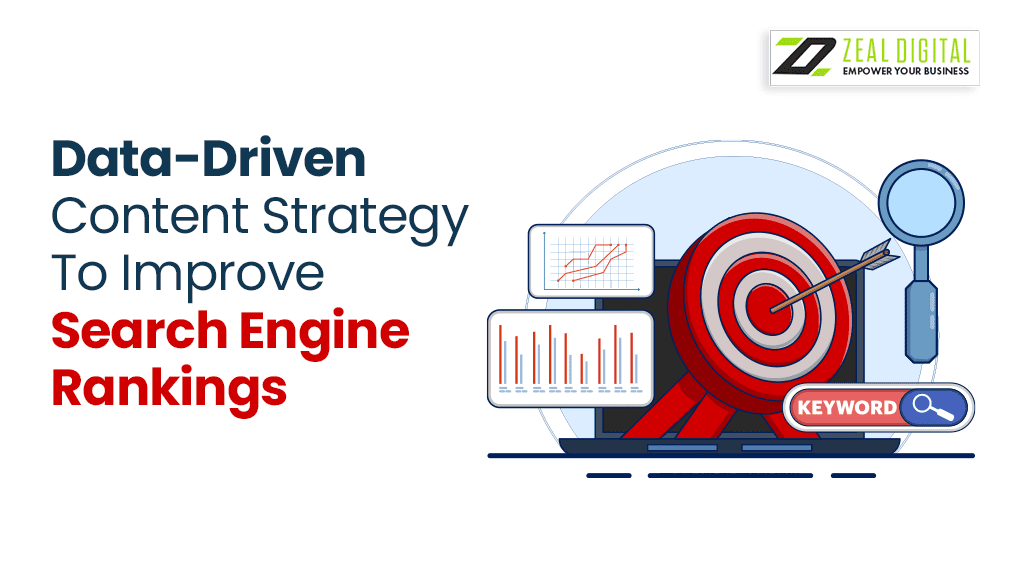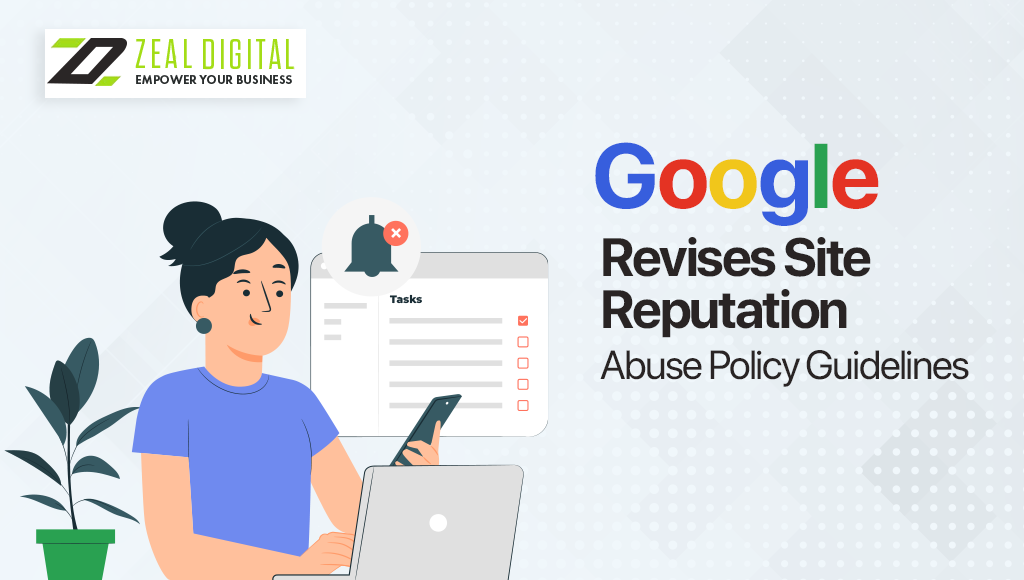In today’s competitive digital marketing landscape, a data-driven content strategy is important for enhancing search engine rankings. As search engines get more advanced, intuition alone is no longer enough. A data-driven approach enables organisations to integrate insights from several data sources to create content that not only fits consumer wants but also adheres to search engine algorithms. This blog delves into the fundamental components of a data-driven content strategy and offers innovative ways for using data to improve search engine results.
The Importance of Data in Content Strategy
Understanding User Intent
One of the most significant benefits of a data-driven content strategy is the ability to identify and align according to the user intent. Businesses may learn about what people are looking for and what type of content satisfies their needs by evaluating search query data, user behaviour and engagement metrics. This understanding aids in the creation of content that targets specific user queries and pain areas, boosting the chances of ranking higher in search engine results pages (SERPs).
Identifying Content Gaps
Data analysis can identify content gaps in your niche or market. Businesses can find gaps in their content by analysing its performance and comparing it to that of competitors. Addressing these gaps with relevant, high-quality content can boost search engine rankings and establish authority on the issue.
Key Components of a Data-Driven Content Strategy
Keyword Research and Optimisation
Effective keyword research is the foundation of a data-driven content approach. Businesses can use tools like Google Keyword Planner, SEMrush or Ahrefs to uncover high-value keywords that have the potential to generate traffic. Analysing search volume, competition and related keywords enables the design of SEO-friendly content. Additionally, adopting long-tail keywords helps capture more particular search intents while reducing competition.
Competitor Analysis
Competitor analysis provides valuable insights into what is working in your industry. By examining the content strategies of top competitors, businesses can identify successful topics, content formats and keywords. Tools like BuzzSumo and SimilarWeb can help analyse competitor performance, uncovering opportunities for differentiation and improvement in your own content strategy.
Utilising Data for Content Creation
Audience Segmentation and Personalisation
Data-driven content initiatives gain from audience segmentation and customisation. Analysing demographic, behavioural and psychographic data enables firms to adapt content to specific audience segments. Personalising content boosts relevance and engagement, increasing the likelihood of ranking better in search results. For example, material tailored to particular buyer personas can address unique wants and pain spots, resulting in increased user happiness and improved search engine performance.
Performance Metrics and Continuous Improvement
Monitoring performance metrics like page views, bounce rates and conversion rates is essential for content optimisation. Data from Google Analytics and other similar tools can reveal how well content is doing and where modifications are required. Regularly evaluating these indicators aids in determining which material is engaging with consumers and which is underperforming, enabling for ongoing refinement and improvement of content strategy.
Advanced Techniques for Data-Driven Content Strategy
Predictive Analytics
Predictive analytics uses previous data to estimate future trends and behaviours. Businesses can use machine learning algorithms and statistical models to predict which themes, keywords and content formats will acquire momentum. This preemptive approach enables the generation of content that is consistent with future search trends, offering firms a competitive advantage in search rankings.
Content Performance Heatmaps
Content performance heat maps show how users interact with your content. Tools like Crazy Egg and Hotjar can monitor user engagement metrics including clicks, scroll depth and mouse movements. Analysing these heat maps allows you to determine which parts of your material are receiving attention and which are being ignored. This information can be utilised to optimise content layout, improve user experience and boost search engine ranks.
Leveraging Structured Data and Schema Markup
Enhancing Rich Snippets
Structured data and schema markup help search engines better understand the material on your pages. Businesses that use schema markup can improve rich snippets — detailed information that displays in search results such as star ratings, prices and event details. Rich snippets improve visibility in search results and can boost click-through rates, resulting in higher rankings.
Improving Local SEO
For businesses targeting local audiences, structured data can improve local SEO by providing search engines with precise information about business locations, services and contact details. Implementing local business schema markup ensures that your business appears in local searches and maps, driving more relevant traffic and improving local search rankings.
Integrating Data with Content Distribution
Social Media Insights
Data from social media platforms can provide valuable insights into content performance and audience preferences. By analysing engagement metrics such as likes, shares and comments, businesses can identify which types of content resonate most with their audience. This information can guide content creation and distribution strategies, ensuring that content is effectively promoted across relevant channels.
Email Marketing Metrics
Email marketing metrics, including open rates, click-through rates and conversion rates, offer insights into how well content is performing within email campaigns. Analysing these metrics helps businesses understand which content drives engagement and conversions, allowing for more targeted and effective email content strategies. This integration of data ensures that content reaches the right audience and achieves desired outcomes.
Optimising for Voice Search
Adapting Content for Conversational Queries
With the rise of voice-activated devices like smartphones and smart speakers, optimising content for voice search is becoming increasingly important. Voice search queries are often more conversational and longer than typed queries. By analysing voice search data and incorporating natural language processing techniques, businesses can tailor their content to align with how people speak rather than type.
Implementing Natural Language and Question-Based Content
To effectively optimise for voice search, write content that answers typical questions in natural language. Structured material that answers particular questions and uses conversational language helps match the intent behind voice searches. This technique not only increases the likelihood of appearing in voice search results, but it also improves overall content relevancy and user engagement. Tools like Google’s Keyword Planner can help you understand popular voice search questions and create content that addresses them.
A data-driven content strategy is crucial for enhancing search engine rankings and achieving digital marketing success. By leveraging insights from keyword research, competitor analysis, audience segmentation and performance metrics, businesses can create content that aligns with user intent and search engine algorithms. Advanced techniques like predictive analytics, content performance heatmaps and structured data further enhance strategy effectiveness. Additionally, optimising for voice search can help meet evolving user needs. For businesses looking to implement these strategies effectively, partnering with experts of SEO in Canberra can provide valuable guidance and support in achieving superior search engine performance.
Frequently Asked Questions (FAQs)
What role does competitor analysis play in a data-driven content strategy?
Competitor analysis is essential in a data-driven content strategy since it provides insights into what is successful in your industry. Businesses can find successful subjects, keywords and content formats by analysing their competitors' content strategies. This information assists you in differentiating your material, identifying new opportunities and developing your own content strategy in order to attain higher search engine rankings.
How can businesses optimise their content for voice search?
To optimise content for voice search, businesses should focus on using natural language and addressing common conversational queries. Voice searches are often more conversational and longer than typed queries, so creating content that answers specific questions and uses conversational language is key. Analysing voice search data and incorporating question-based content helps align with the intent behind voice searches and improves visibility in voice search results.
What are some advanced techniques to enhance a data-driven content strategy?
Advanced techniques to enhance a data-driven content strategy include predictive analytics, which forecasts future trends based on historical data and content performance heatmaps, which visually represent user interactions with content. Additionally, implementing structured data and schema markup can enhance rich snippets and improve local SEO. These techniques provide deeper insights and optimisation opportunities, helping businesses stay ahead of trends and refine their content strategies.






